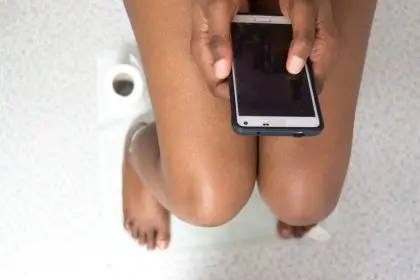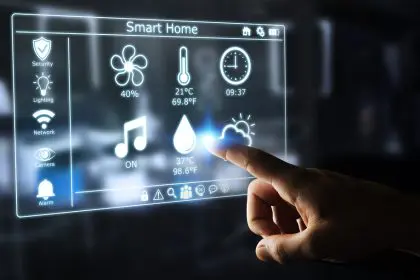As parents, we constantly look out for our children’s well-being, often paying close attention to their daily habits, behaviors and health. When something feels “off,” it’s natural to investigate further. One of the concerns that can be easily overlooked is diabetes. Though diabetes is often associated with adults, children can also develop this condition, and early detection is crucial. Recognizing the signs early allows for timely intervention, which can make all the difference in managing diabetes effectively and ensuring your child’s health remains stable.
In this article, we will explore five signs that suggest your child might have diabetes. Being aware of these signs can help you take the right steps toward diagnosis and care. Diabetes — especially type 1 — can develop quickly, and understanding the signals your child’s body sends can provide them with a healthier future.
1. Increased thirst and frequent urination
One of the earliest and most common signs of diabetes in children is increased thirst — also known as polydipsia. You may notice your child drinking water more often than usual or asking for drinks throughout the day, even if they haven’t been particularly active. This occurs because their body is trying to flush out excess sugar in the blood by producing more urine.
With increased thirst comes frequent urination — especially during the night. If your child suddenly starts waking up to go to the bathroom multiple times or begins wetting the bed after being dry for years, it could be more than just a growth phase. The body — in an attempt to lower the blood sugar — forces the kidneys to work overtime, leading to dehydration and the need to drink more water.
These behaviors can sometimes be brushed off as normal childhood quirks, but when paired together, they can indicate something deeper, and it’s essential to pay attention.
2. Unexplained weight loss
A dramatic and unexplained weight loss can be alarming for any parent. This sign is particularly concerning in children because, during their growth years, they should be gaining weight, not losing it. If you notice your child’s clothes fitting loosely or their body frame becoming thinner despite eating as usual or even more, it could be a warning signal.
In diabetes — particularly type 1 diabetes — the child’s body is unable to use glucose for energy due to a lack of insulin production. Instead, the body begins to break down muscle and fat to get the energy it needs — resulting in weight loss. This is an emotional trigger for many parents because it can feel overwhelming to see a child’s health suddenly deteriorate without an apparent reason.
If your child’s weight loss is accompanied by fatigue or changes in mood, these could be clear indicators of something more serious — such as diabetes.
3. Fatigue and lethargy
Children are usually full of energy, bouncing around with enthusiasm. However, if you notice your child becoming unusually tired or lacking the energy to participate in activities they used to enjoy, this could be a sign of diabetes. Fatigue in children can manifest as crankiness, loss of interest in playtime or difficulty focusing in school.
When the body lacks insulin or cannot use insulin efficiently, glucose is unable to enter the cells — depriving them of the energy they need to function. As a result, your child’s energy levels may plummet — making even simple activities feel exhausting. For parents, seeing this sudden change can be concerning and is a significant reason to consult with a health care professional.
4. Increased hunger yet feeling weak
Another sign to watch for is increased hunger. While it’s normal for children to have periods of heightened appetite — especially during growth spurts — a child with diabetes may feel constantly hungry, even after eating. This occurs because their body isn’t able to properly use the glucose in the food they eat for energy.
What’s particularly alarming is that despite eating more, your child may continue to feel weak or tired. The excess glucose remains in the bloodstream instead of being converted into energy — leaving your child’s body in a state of “starvation.” This disconnect between appetite and energy levels can be confusing for both parents and children — leading to frustration and concern.
5. Slow healing of cuts and infections
Children are bound to get scrapes, bruises and occasional cuts from playing. However, if you notice that your child’s injuries are taking longer than usual to heal, or if they are experiencing recurrent infections, it could be a sign of diabetes. High blood sugar levels can impair the body’s ability to heal wounds and fight infections effectively.
For example, common childhood infections like those in the skin, gums or bladder may become more frequent or persistent. As a parent, seeing your child struggle with lingering illnesses or slow recovery from injuries can be an emotional experience. This sign is often subtle and easy to dismiss but is crucial to identify.
Taking action for your child’s health
Noticing any of these signs in your child can stir feelings of concern and anxiety, but it’s important to remember that early diagnosis and treatment can make a significant difference in managing diabetes. If your child is showing one or more of these symptoms — whether it’s excessive thirst, unexplained weight loss, fatigue or slow healing of wounds — it’s vital to consult with a health care professional immediately.
A simple blood test can determine whether your child has diabetes, and from there, steps can be taken to manage the condition. Early detection allows for a more controlled approach, giving you the tools needed to support your child and ensure they live a healthy, active life.
As parents, we have a natural instinct to protect our children, and being proactive about their health is one of the best ways to do so. By staying aware of these five signs, you’re already taking the first step toward safeguarding your child’s future.
By following a structured health care plan, you and your child can navigate the complexities of diabetes together. Remember, with the right support and attention, diabetes can be managed effectively, allowing your child to thrive.
This story was created using AI technology.











